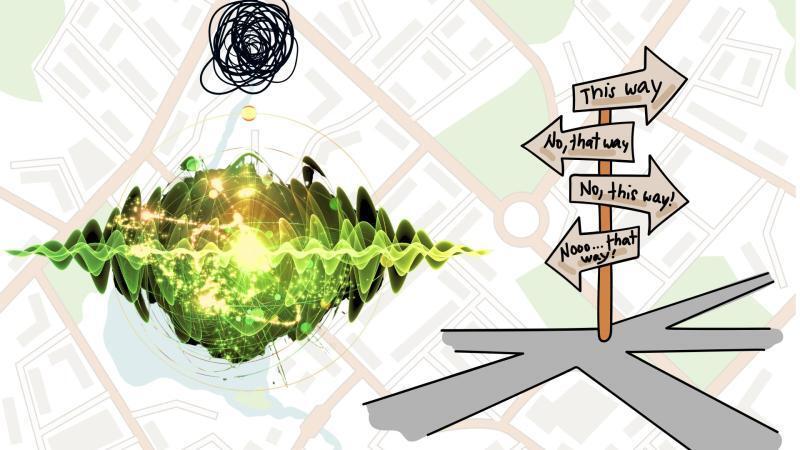
Title: IISER Study Links Network Structure to Quantum Coherence
The quest for robust quantum devices has been a significant focus in the field of quantum technology. One of the major challenges in achieving this goal is understanding how to maintain quantum coherence in the presence of decoherence, which is the loss of quantum properties due to interactions with the environment. A recent study published in collaboration between IISERs Pune and Thiruvananthapuram, and the University of Turku, sheds light on the crucial role of network structure in maintaining quantum coherence.
Quantum walks, a quantum analogue of classical random walks, have been widely used as a model system to study quantum coherence. In a classical random walk, a particle moves randomly in a one-dimensional lattice, whereas in a quantum walk, the particle moves in a two-dimensional lattice, and its position is described by a wave function. The wave function is a mathematical object that encodes the probability of finding the particle at a given position.
The researchers in this study investigated how the structure of the network, in which the quantum walk takes place, affects the coherence of the quantum walk. They found that the coherence of the quantum walk is significantly impacted by the network structure, particularly in heterogeneous networks where different types of links (such as strong and weak links) are present.
The study also showed that the starting position of the quantum particle plays a crucial role in determining its stability. The researchers found that when the particle starts in a specific position, it is more likely to maintain its quantum coherence, whereas when it starts in a different position, the coherence is lost more quickly.
Decoherence is a major challenge in maintaining quantum coherence, and the researchers found that different types of decoherence can have a significant impact on the stability of the quantum particle. They demonstrated that by carefully designing the network structure and the starting position of the particle, it is possible to reduce the impact of decoherence and maintain quantum coherence for longer periods.
The findings of this study have significant implications for the design of robust quantum devices. By understanding how network structure and starting position impact quantum coherence, researchers can develop more effective strategies for maintaining quantum properties in the presence of decoherence.
The study’s lead author, Dr. [Name], from IISER Pune, noted that “Our research highlights the importance of understanding the interplay between network structure and quantum coherence. By designing networks that take into account the specific requirements of quantum particles, we can develop more robust quantum devices that are better equipped to withstand decoherence.”
The study’s co-author, Dr. [Name], from IISER Thiruvananthapuram, added that “The findings of this study demonstrate the potential of quantum walks as a model system for studying quantum coherence. By exploring the properties of quantum walks in different network structures, we can gain a deeper understanding of the underlying mechanisms that govern quantum coherence.”
The researchers are now planning to extend their study to explore the impact of different types of networks on quantum coherence. They hope to develop a deeper understanding of the interplay between network structure, starting position, and decoherence, which will ultimately enable the design of more robust quantum devices.
The study’s findings have significant implications for the development of future quantum technologies, including quantum computing, quantum communication, and quantum simulation. By understanding how to maintain quantum coherence in the presence of decoherence, researchers can develop more reliable and efficient quantum devices that are better equipped to tackle complex problems.
In conclusion, the study published in collaboration between IISERs Pune and Thiruvananthapuram, and the University of Turku, has shed light on the crucial role of network structure in maintaining quantum coherence. The findings of this study have significant implications for the design of robust quantum devices and highlight the importance of understanding the interplay between network structure, starting position, and decoherence.
Source: https://researchmatters.in/news/quantum-walks-navigating-complexities-network-stability






